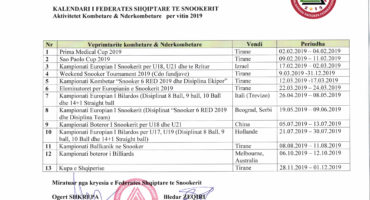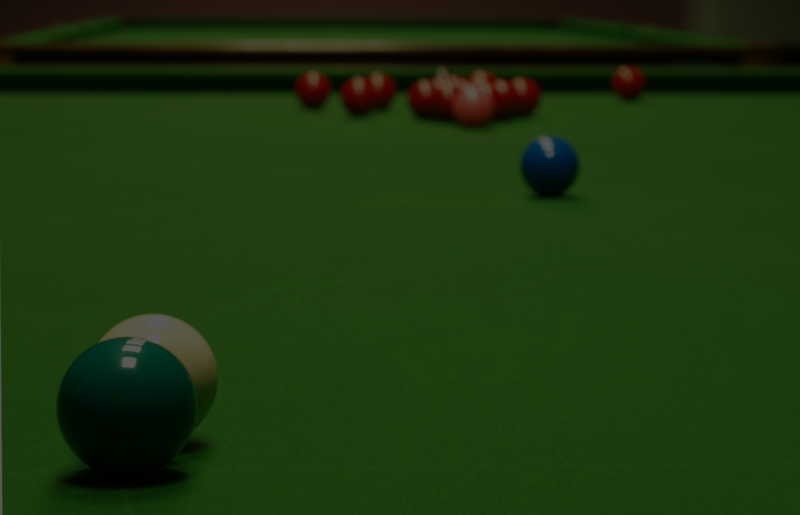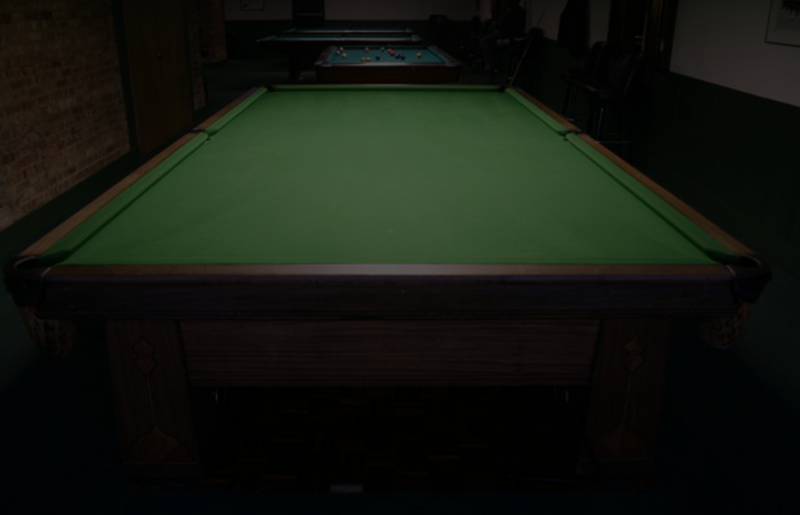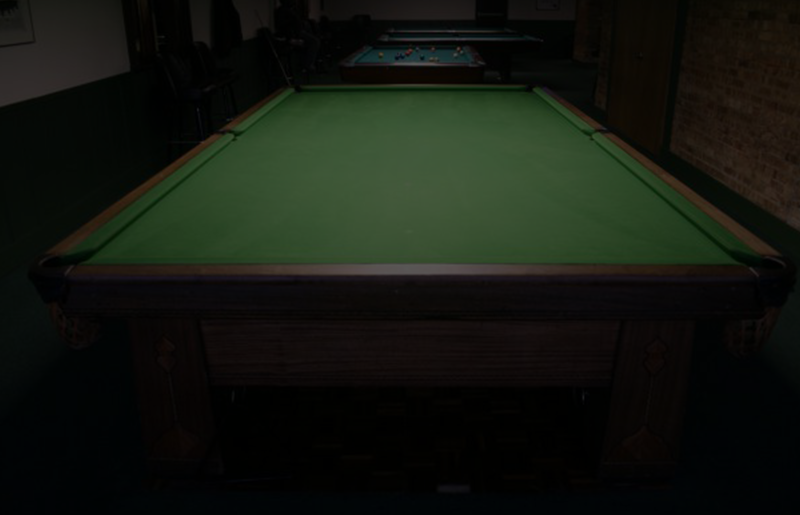Rules of the game
Section 1 – Equipment
Professional snooker (category 1) has field dimensions (3569mm x 1778mm) with a tolerance of (+/- 13mm).
The Baulk Line is 737mm from the bottom of the billiards. "Zone D" is a semi-circle with a 292mm radius.
The balls should have a diameter of 52.5mm with a telorance of (+/- 0.05mm).

The balls are the same and they can be changed only if the players agree with each other and the decision of the judge.
The stack should be longer than 914mm and can be used by stacker-acceptable stack extensions.
The height of the field from the ground is 876mm.
Section 2- The Game
The purpose of the game is to put the balls in compliance with the rules and score points against the opponent.
The game is played with the help of 15 red balls which have no numbers (called reds) and 6 other colored balls which are without numbers (called colors) and Cue ball.
Points for each color are as follows:
The method of placing the billiards in the field is as follows:
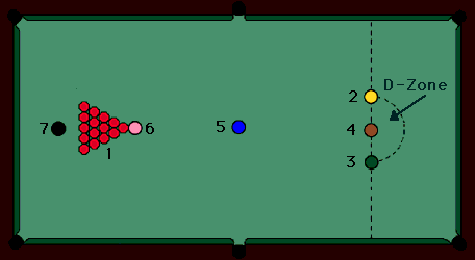
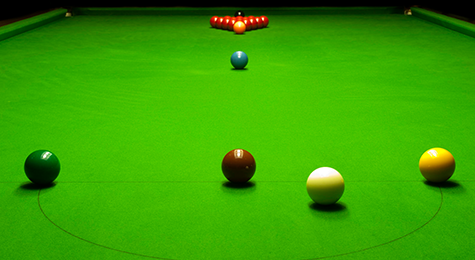
Game Development
The game starts with the cue ball in hand. The starting player must place it in a semi-circle or otherwise called D-Zone (pictured above). This rule also applies during the game if the player enters the pit or leaves the field.
The first shot to open the game should definitely be a red color. Initial shooting is best done according to figure 2 above so that the red balls do not open too much and the opponent is not able to take them easily. If the player / striker gets no ball then he leaves the snooker table, sits in his chair in order to allow the other player to make his shot.
If a colored ball is taken instead of getting a red bil, then it is called a foul and the minimum point added to the opponent is 4 points, blue balls 5 points, pink balls 6 points and black balls 7 points.
The throw is called regular if the catch does not go into the pit or gets out or a red ball is put inside. If the turn is for red, then it is not called a foul if the player gets 2 reds or more red immediately but the amount of points the player receives is 1 point regardless of the number of red tickets he has entered with a shot put. If the turn is for the red card and the player gets a color ball in that kick then it is called a foul and the amount of points added to the opponent is (Minimum 4 points, Blue ball 5 points, Pink ball 6 points and Black ball 7 points) .
After picking a red ball, continue with picking a colored ball and so on until all the red balls are finished. Whenever a colored ball is taken, the referee must place the field back to its original position. If that position is not free then the ball is placed in a free position of one of the positions of other descending colors (if the pink ball does not have the free position then it is placed in this order “in the place of Bluse, brown, green, yellow and finally Black. ”
After finishing the red balls, shoot at one of the colored balls in the field and extract that balls to its original position based on the above rule. After that the shot should start from the smallest to the largest (2 points yellow, 3 points green, 4 points paint, 5 points blue, 6 points pink, 7 points black) and the cue ball will not go out if they are scored. by the player. The game ends after the last ball is taken.
The winner is the player who has the highest points. If at the end of the match the points are a draw, then the black balls comes into its starting position, and the player who has taken the last ball puts the balls in half circle and hits the black balls. Who gets this ball finishes the game. If the attacker makes a foul then the game is over for the opponent.
Faults / Penalties
The following acts are faults and follow penalties:
| Value of ball if: | (1) Shoots before the referee has determined the ball you will take. (2) Shoots the cue ball with the stack more than once. (3) Strikes when both feet are off the floor. (4) Shoots before your opponent finishes the shot. (5) Does not hit any field balls. (6) Insert cue ball into the pit. (7) Shoots the ball with a jump. (8) Plays with non-standard stack. (9) Debate with the opponent. | ||
|---|---|---|---|
| The value of the ball to be taken or the already taken ball, whichever is greater: | (1) Make a shoot when one of the balls is in motion. (2) Shoots before the referee have determined the ball you will pick. (3) Take a ball which was not in order to receive. (4) Hits a ball which was not his turn to take. (5) Makes a throwing shot. (6) Touch a ball with a stack/hand before hitting it. (7) Throws a ball out of billiards. | ||
| The value of the ball or the highest value of two balls | The value of the ball or the highest value of the two balls that it strikes immediately (unless it turns red and enters two or more reds immediately) | ||
| Seven points if the attacker: | 1) Drop the ball out of the billiards for any purpose. (2) Use any object to measure gaps or distances (eg visual). (3) Consecutive red shots (if you get a red, hit again and get a red, not colored ball). (4) Use any balls other than the target to hit other balls. (5) It does not state to the judge who will be taken. (6) Get a red when declaring he will get a colored ball. | ||

